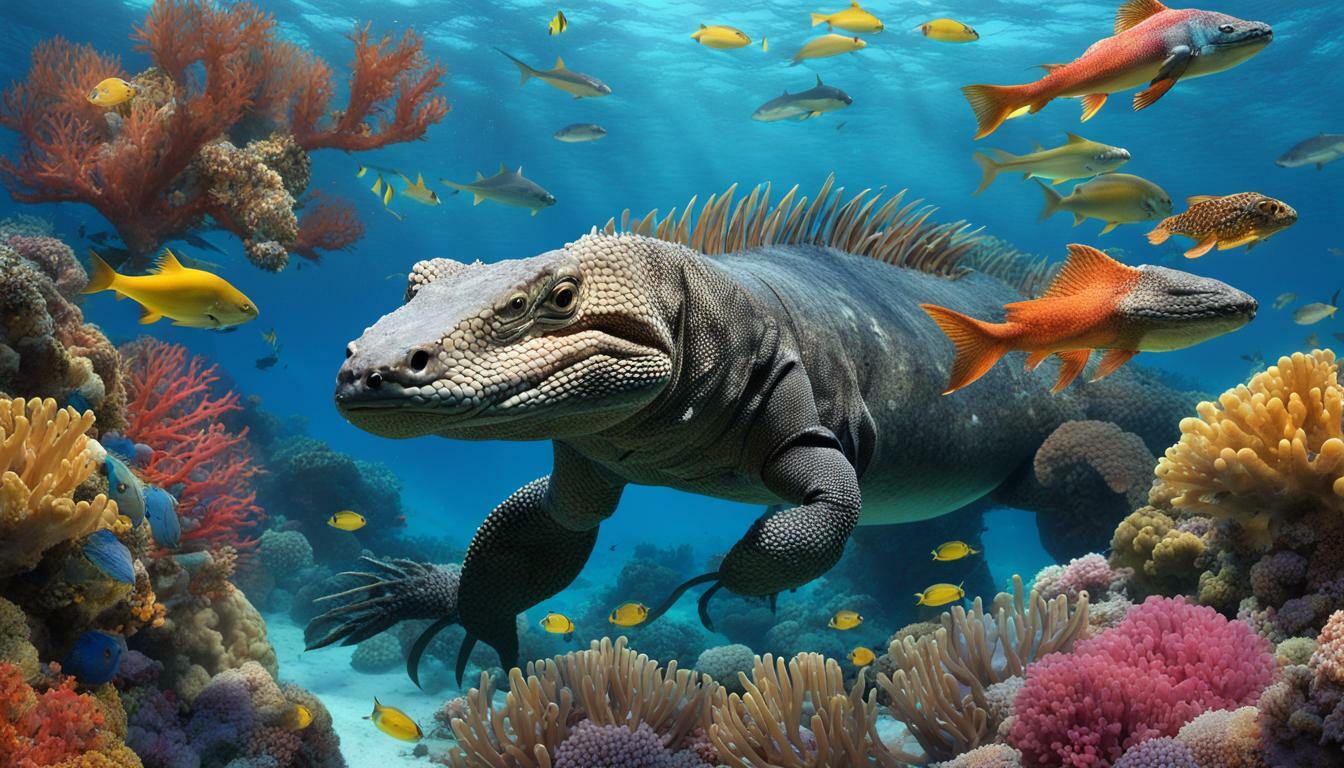Do Hippos Live In The Jungle? Unveiling the Truth

Table of content:
Hippos are large, heavyset, semi-aquatic mammals that live in rivers, lakes, swamps, and wetlands in sub-Saharan Africa. Despite their name, hippos do not actually live in the jungle.
Where Do Hippos Live?
Hippos are found across sub-Saharan Africa in areas where there is abundant water and enough grass for grazing. Their native habitats include rivers, lakes, marshes, swamps, wetlands, and areas of flooded forest or bush.
Some key facts about the habitat and range of hippos:
- Hippos are most commonly found in lowland areas below 1,970 feet in elevation.
- They inhabit slow-moving bodies of water such as rivers, lakes, and swamps.
- Hippos can even be found in estuaries where river water mixes with sea water.
- High densities of hippos are found in East Africa, especially in the Mara, Tana, Zambezi, and Kafue river systems.
- Southern Africa also has significant hippo populations in countries like Zambia, Botswana, and South Africa.
- Hippos have been eliminated from much of their historic range due to habitat loss, hunting, and human settlement. The largest remaining populations are in protected areas.
Hippos require permanent water deep enough for them to submerge fully to sleep and keep their skin moist and hydrated. Access to land is also crucial for basking, grazing, calving, and moving between areas. Ideal hippo habitats have grassy areas near the water for grazing at night.
During the dry season when water levels drop, hippos will concentrate in remaining pools and waterholes. In extreme conditions, they can even flourish in muddy water that looks more like a swamp or marsh.
Why Don’t Hippos Live in the Jungle?
Jungles are generally not suitable habitats for hippos for several reasons:
- Hippos are grazers that eat grass and aquatic plants. Jungles tend to have abundant trees and shrubs, but less open grassland for grazing.
- Rivers and waterways in jungles can be too shallow, narrow, or fast-moving to accommodate hippos. They prefer wide, deep, slow-moving bodies of water.
- The dense canopy covering in jungles limits the sunlight reaching the ground. Hippos rely on the sun to warm their bodies when they emerge from the water.
- Jungles do not provide enough open space on land for hippos to graze, socialize, calve, and move between water sources.
- Whereas jungles have thick underbrush and vegetation on land, hippos prefer open plains or grassy areas near the water.
- Most tropical jungles are not found within the natural geographic range of hippo populations in sub-Saharan Africa.
What Kind of Habitat Do Hippos Need?
The ideal habitat for hippos consists of:
- Permanent, slow-moving bodies of water such as lakes, rivers, swamps, and marshes. Stagnant water is tolerated but not ideal.
- Rivers and lakes wide and deep enough for hippos to fully submerge, usually at least 6 feet deep. They may range 5-30 miles along a waterway.
- Adjacent grasslands or open plains that provide grazing opportunities at night.
- Reed beds, water lilies, and other aquatic vegetation in sheltered areas for feeding.
- Muddy or sandy banks with easy access to the water.
- Sunny spots on land for basking and thermoregulation during the day.
- Cool, shady patches of forest or brush to provide protection from the midday sun.
- Lowlands below 1,970 feet elevation with warm year-round temperatures.
Are Hippos Found in the Rainforest?
Although hippos are found across sub-Saharan Africa, they do not naturally live in tropical rainforests.
The equatorial rainforests of Central Africa are dominated by dense stands of trees that block much of the sunlight from reaching the forest floor. Rivers often have muddy banks and fast currents that would make it difficult for hippos to enter and exit the water.
However, in some cases small hippo populations have been found living in swampy clearings of forest or along slow, meandering rivers in rainforest regions. Their presence may indicate that pockets of rainforest do provide suitable habitat conditions.
In countries like Gabon and Republic of Congo, hippos inhabit forest/savanna mosaic environments. Here open savanna grasslands transition into patches of rainforest. This landscape offers access to both grass for grazing and shady forest for shelter.
Overall the lowland tropical rainforests of the Congo Basin do not comprise prime habitat for substantial hippo populations. But they may occupy small home ranges in localized swamps and slow-moving waterways.
Do Hippos Live in Swamps?
Swamps form a major part of the hippo habitat across Africa. Hippos thrive in swamps alongside rivers, lakes, and wetlands.
Swamps and marshes offer hippos:
- Shallow water to wallow in and keep their skin moist
- Thick vegetation for grazing and taking cover
- Warm, muddy conditions for staying cool
During the dry season when water levels fall, hippos will crowd into remaining swamps and pools. The warm, stagnant water and thick mud helps prevent their skin from cracking in the heat.
Swamps often form on floodplains around major rivers and lakes. Hippos follow these seasonal waterways between the core habitat and outer swamps.
The papyrus swamps of East Africa in the Sudd wetlands of South Sudan and the Okavango Delta in Botswana support some of the largest swamp-dwelling hippo populations.
Marshy habitats are crucial to hippos during the dry season across their African range. The animals thrive amidst reedy marshes as long as some water remains.
What Do Hippos Eat?
Hippos are herbivores, meaning they only eat plant matter. A hippo’s diet consists mainly of grasses and other land vegetation.
Their enormous size and weight means hippos need to consume a lot of food each night. An adult hippo eats up to 150 pounds of vegetation per night.
Some key facts about their grazing habits:
- Hippos mainly graze on grass and will feed on most species, preferring short, green varieties.
- They also eat aquatic plants, fruits, herbs, shrubs, and young trees found near the water.
- Their large lips and wide mouth allow them to rip out or mow down grasses efficiently.
- The strong jaws and large tusks of hippos help shear and shred thick vegetation.
- Hippos spend 4-5 hours grazing at night, usually in meadows up to 2 miles from water.
- Male hippos can consume up to 150 lbs per night, females up to 110 lbs.
- Hungry hippos emerging from the water may graze continuously for 18 hours.
- Hippos have adaptations like wide nostrils and eyes placed high on their head to facilitate grazing with their head down.
Though classified as herbivores, there are reports of hippos occasionally eating meat. This includes baby hippos, dead animals, birds, and fish. But vegetation comprises over 98% of their normal diet.
How Long Can Hippos Stay Underwater?
Hippos have incredible abilities to remain submerged underwater for long periods of time. On average, they can hold their breath underwater for 5-7 minutes at a time before surfacing.
- Some hippos can hold their breath for up to 30 minutes when resting fully submerged.
- Calves can only hold their breath for around 2 minutes.
- Underwater excursions usually last 3-5 minutes while feeding or traveling.
- Hippos will reflexively close their nostrils and ears while submerged to keep out water.
- Special adaptations like hemoglobin-rich blood help them conserve oxygen.
- Their eyes can see clearly underwater thanks to flattened lens-like corneas.
Staying cool in the water is crucial for hippos living in hot African climates. Spending daylight hours in rivers and lakes allows them to regulate their temperature and avoid overheating.
Nighttime grazing excursions require recuperating in the water the next day. Hippos even give birth and nurse newborn calves in the water!
How Fast Can a Hippo Run?
Despite their enormous size and stocky shape, hippos can gallop at surprisingly fast speeds when they need to move quickly on land.
- Hippos can achieve short bursts of speed up to 30 mph.
- They have been clocked moving at 18-24 mph in the wild.
- Young hippos can run even faster than adults.
- Hippos mostly walk or trot at just 6-8 mph.
- Full galloping with all 4 feet off the ground is rare and used over short distances.
- Hippos spend most time in water or grazing slowly. Bursts of speed occur when chasing threats.
The fastest speeds ever recorded by researchers for a hippo on land was topping out at 30 mph.
Even more shocking, hippos can keep up sustained speeds of 8 mph in water, plowing through the water faster than an Olympic swimmer!
Overall hippos rely on their size and brute strength more than land speed, but can still outrun humans easily. Don’t turn your back and run from an angry hippo!
Are Hippos Dangerous?
Hippos have a reputation as one of the most aggressive and dangerous animals in Africa. Their sheer size makes them an imposing threat.
Some key facts about why hippos can be extremely dangerous:
- Hippo attacks kill an estimated 500 people each year in Africa.
- Male hippos aggressively defend territories against intruders, including boats and humans along riverbanks.
- With thick skin, hippos can easily overturn small boats and disable outboard motors with their powerful jaws.
- On land hippos can easily outrun humans, charging up to 30 mph for short distances.
- Hippos have razor sharp incisor teeth and massive canine tusks that can easily kill or maim.
- Even grazing hippos will raise and whirl their head if threatened, slashing attackers with their tusks.
- They have an incredibly powerful bite that effortlessly crunches through bones.
- Hippos are considered the deadliest mammal in Africa, killing more people than lions or crocodiles.
- Male hippos actively attack perceived threats to their mates or young. Females also fiercely guard their calf.
In short, it’s best not to underestimate the damage an aggressive hippo can inflict! Give them plenty of distance.
Final Thoughts
In summary, hippos do not live in jungles as they prefer grassy areas near lakes and rivers that provide good grazing. Dense rainforest is not prime habitat, but hippos may inhabit forest clearings with swamps where grass and water sources are available. Their ideal habitat across Africa includes access to permanent bodies of water and adjacent land for grazing at night.
Hippos spend daylight hours cooling off in the water to prevent sunburn and dehydration. Though they look ungainly on land, hippos can run surprisingly fast for short bursts to chase off intruders. And they certainly pack a dangerous bite, making hippos one of the most feared yet fascinating megafauna species across Africa.
Welcome. I’m Adreena Shanum, the proud owner of this website, and I am incredibly passionate about animals, especially poultry. I founded adreenapets.com as a labor of love, stemming from my desire to share my knowledge and experiences with poultry enthusiasts worldwide.




